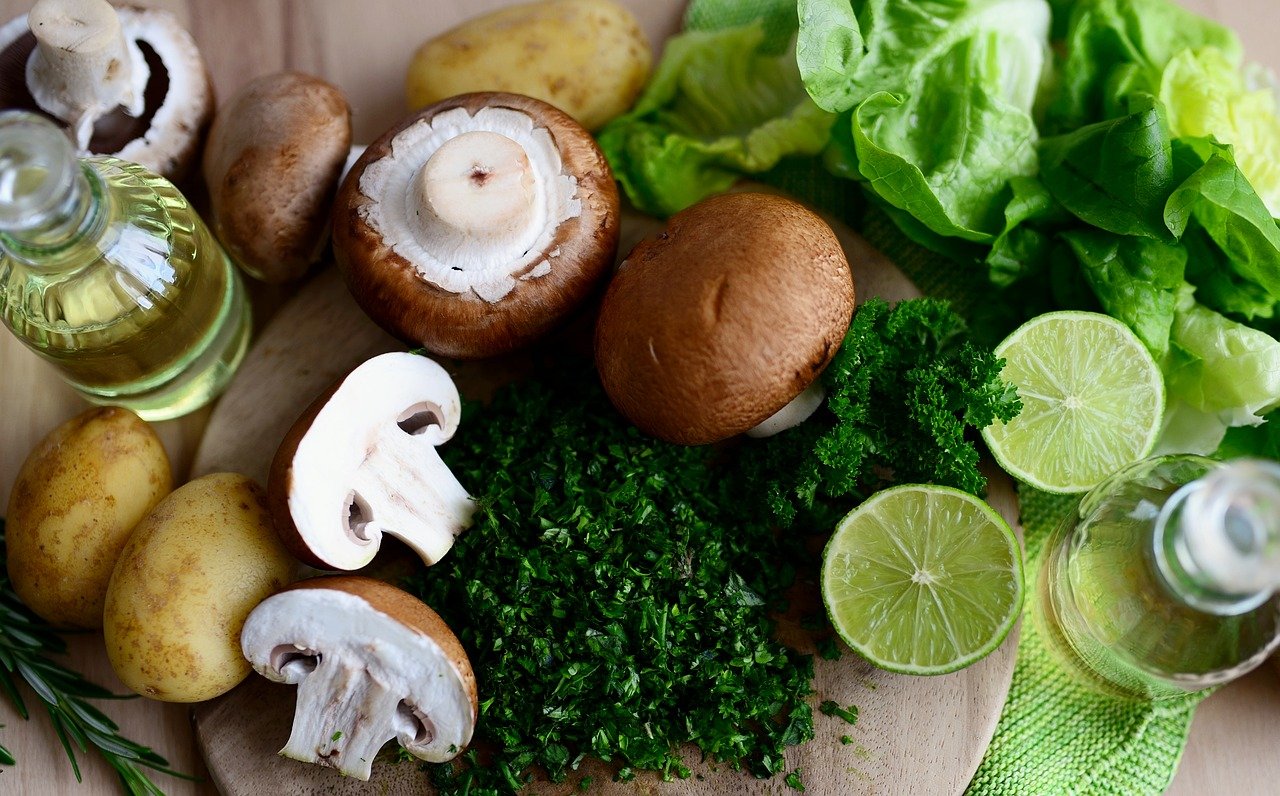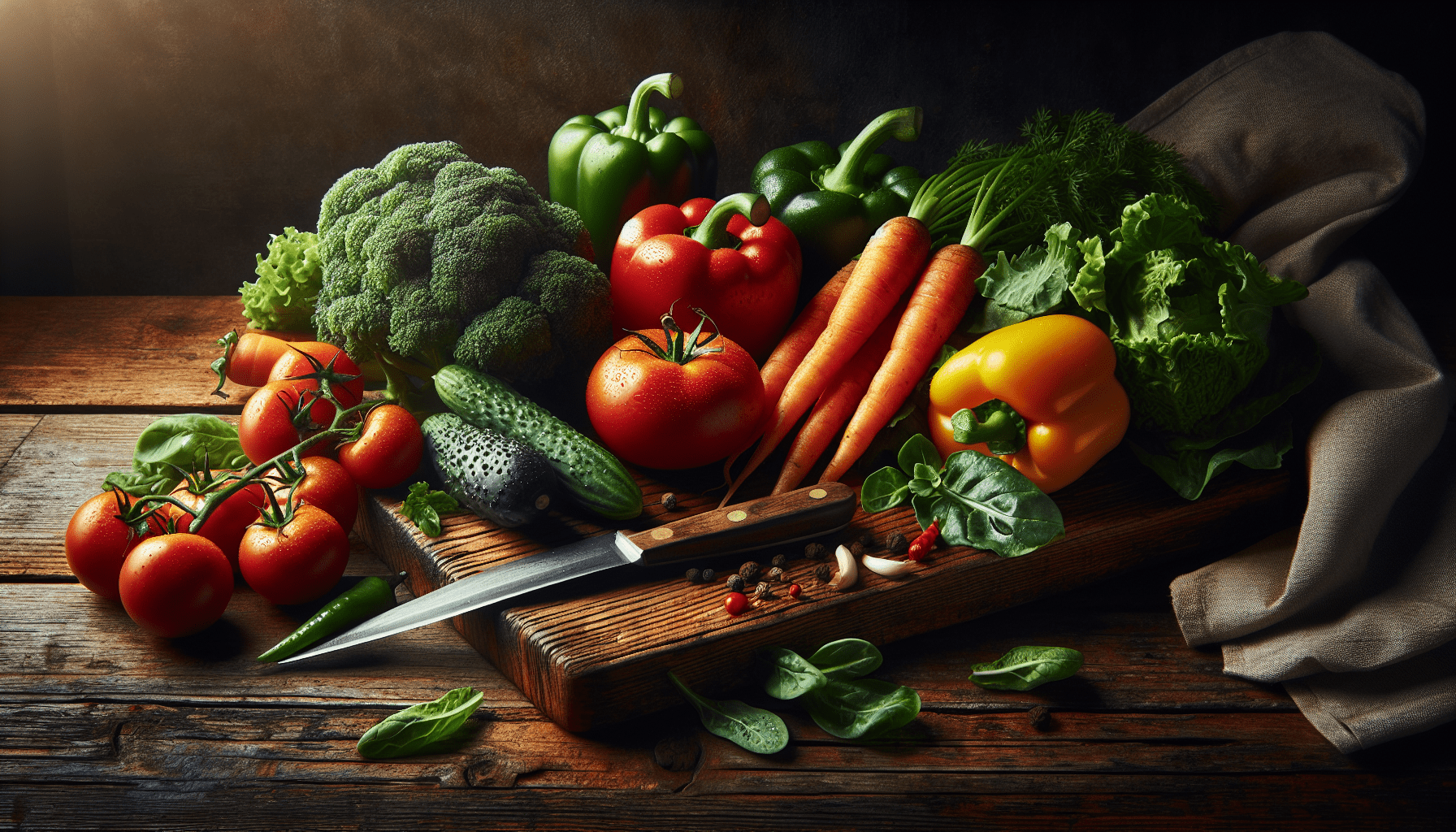Have you ever wondered how we can elevate our cooking skills while ensuring every meal is healthier and more flavorful? Cooking with organic ingredients might be the answer to unlocking luscious flavors and nourishing our bodies. While switching to organic produce might seem like a daunting task, it’s indeed a rewarding journey. In this guide, “Mastering the Art of Cooking with Organic Ingredients,” we’ll explore various aspects, from understanding the benefits of organic produce to practical tips on sourcing and preparing them.
Why Choose Organic Ingredients?
Health Benefits
When we choose organic ingredients, we’re prioritizing our health. Organic produce is grown without synthetic pesticides, fertilizers, or genetically modified organisms (GMOs). This minimizes our exposure to harmful chemicals. Studies have shown that organic foods can contain higher levels of antioxidants compared to their conventional counterparts. Antioxidants are crucial for combating oxidative stress in our bodies, thereby helping to reduce the risk of chronic diseases.
Environmental Impact
Our choice to go organic also supports environmental sustainability. Organic farming practices focus on maintaining soil health, reducing pollution, and promoting biodiversity. By using natural methods for pest control and fertilization, organic farmers help preserve ecosystems and improve soil quality. This can lead to a reduction in soil erosion and water contamination, benefiting the planet in the long run.
Flavor and Freshness
Organic ingredients often boast superior flavor compared to conventionally-grown produce. The focus on soil health and natural farming techniques often results in food that is not only fresh but also rich in taste. We might find that our organic tomatoes are sweeter, our greens are crunchier, and our fruits are more fragrant.
Sourcing Organic Ingredients
Farmers’ Markets and Local Farms
Visiting farmers’ markets or local organic farms can be an exciting way to source fresh and seasonal organic produce. Engaging directly with farmers allows us to understand their growing practices and seek the freshest ingredients possible. Many local farms also offer community-supported agriculture (CSA) programs, where we can subscribe to regular deliveries of organic produce.
Organic Food Stores
Specialized organic food stores or sections within supermarkets are excellent locations for purchasing certified organic ingredients. While it’s essential to check labels, these stores often have stringent practices to ensure the authenticity of organic products. Be on the lookout for USDA Organic or similar certifications to verify the organic status.
Growing Our Own Garden
If we have the space and interest, we might consider growing our own organic garden. This endeavor not only gives us full control over the farming process but also ensures a steady supply of fresh, seasonal ingredients. Starting with easier crops such as herbs, tomatoes, or lettuce can be a rewarding first step.

Understanding Organic Labels
Certified Organic
When we see the “Certified Organic” label, it signifies that the product has met specific regulatory standards in its production. For example, in the United States, a USDA Organic label indicates that the produce was grown without synthetic fertilizers, pesticides, or bioengineering. These strict standards help ensure the integrity and healthfulness of the product we’re buying.
| Label | Description |
|---|---|
| USDA Organic | Meets U.S. Department of Agriculture standards for organic farming |
| EU Organic Logo | Adheres to the European Union regulations on organic production |
| Certified Organic CAN | Complies with Canadian organic farming regulations |
| Bio-Siegel | German certification for organic agriculture |
100% Organic vs. Made with Organic Ingredients
We might come across labels stating “100% Organic” or “Made with Organic Ingredients.” It’s important to understand the distinction:
- 100% Organic: The product is made entirely from organic ingredients.
- Organic: The product is made with at least 95% organic ingredients.
- Made with Organic Ingredients: The product contains at least 70% organic ingredients but can include specific non-organic components.
Cooking with Organic Ingredients
Planning Our Meals
Effective meal planning can enhance our experience of cooking with organic ingredients. Start by considering what fruits and vegetables are in season, as these will often be freshest and most flavorful. Designing a weekly menu around in-season produce can also be cost-effective, as these items are typically more abundant.
Essential Organic Staples
Certain organic ingredients can become our kitchen staples. Here’s a list of versatile ingredients that can be used across various cuisines and recipes:
| Ingredient | Usage |
|---|---|
| Organic Olive Oil | Cooking, dressings, marinades |
| Organic Honey | Sweetener, baking, sauces |
| Organic Grains | Rice, quinoa, oats |
| Organic Spices | Seasoning, flavor enhancement |
| Organic Vegetables | Salads, soups, stir-fries |
| Organic Fruits | Snacking, desserts, smoothies |
Proper Storage
Storing organic ingredients correctly is crucial to maintaining their freshness and nutritional value. Fresh fruits and vegetables should typically be refrigerated to keep them crisp. Items like grains and spices should be stored in airtight containers in a cool, dark place. We should also remember that organic produce might perish faster than conventionally grown alternatives due to the absence of preservatives, so frequent grocery runs might be necessary.

Practical Tips for Cooking
Washing and Preparing
Even though organic produce is grown without synthetics, it’s important to wash it thoroughly. Use a mixture of water and white vinegar as a natural cleaning solution. Peeling and trimming should be done just before cooking to retain maximum nutrients.
Cooking Techniques to Enhance Flavor
Certain cooking techniques can enhance the natural flavor of organic ingredients. Here are some methods we can consider:
Roasting
Roasting can bring out sweet and savory flavors by caramelizing the natural sugars in vegetables. Toss our organic carrots, sweet potatoes, or cauliflower in a little olive oil, sprinkle with spices, and roast them in the oven until they develop a golden-brown exterior.
Steaming
Steaming is a gentle cooking method that helps preserve the nutrients and natural flavors of vegetables. Use a steamer basket to cook greens, broccoli, or asparagus until they are tender yet crisp. A squeeze of lemon juice or a drizzle of olive oil can provide additional flavor.
Grilling
For a smoky, charred finish, grilling is an excellent option. Whether it’s organic chicken, fish, or vegetables, grilling adds another layer of depth to our dishes. Marinate our meats and vegetables with organic spices and oils before grilling to enhance the taste.
Delicious Recipes to Try
Organic Vegetable Stir-Fry
Stir-fries are quick, versatile, and perfect for using an array of organic vegetables.
Ingredients:
- 2 tbsp organic olive oil
- 2 cloves garlic, minced
- 1-inch piece ginger, minced
- 1 bell pepper, sliced
- 1 carrot, sliced
- 1 zucchini, sliced
- 1 cup broccoli florets
- 2 tbsp organic soy sauce
- 1 tbsp organic honey
- 1 tsp sesame oil
- Cooked organic rice for serving
Instructions:
- Heat the olive oil in a large pan over medium heat.
- Add garlic and ginger, cooking until fragrant.
- Toss in the bell pepper, carrot, zucchini, and broccoli, stirring frequently.
- Mix soy sauce, honey, and sesame oil, then pour into the pan.
- Cook until vegetables are tender but still crisp.
- Serve over rice.
Organic Berry Smoothie
A smoothie made from organic berries can be a refreshing and nutritious start to our day.
Ingredients:
- 1 cup organic mixed berries (strawberries, blueberries, raspberries)
- 1 organic banana
- 1 cup organic yogurt or almond milk
- 1 tbsp organic honey
- 1 tbsp organic chia seeds
Instructions:
- Add all ingredients to a blender.
- Blend until smooth.
- Pour into a glass and enjoy immediately.

Economical Tips for Buying Organic
Buy in Bulk
Purchasing staples like grains, nuts, and beans in bulk can be more economical while reducing packaging waste. Look for bulk bins in natural food stores.
Prioritize Produce
If we need to balance our budget, prioritize buying organic for the “Dirty Dozen” – fruits and vegetables that typically have the most pesticide residue when grown conventionally.
| Dirty Dozen |
|---|
| Strawberries |
| Spinach |
| Kale |
| Nectarines |
| Apples |
| Grapes |
| Peaches |
| Cherries |
| Pears |
| Tomatoes |
| Celery |
| Potatoes |
Seasonal Purchases
Buying fruits and vegetables in season can help reduce costs and ensure we get the freshest produce. Local farmers’ markets often have better prices on seasonal produce.
Overcoming Common Challenges
Limited Availability
In some regions, organic products may not be widely available. Online retailers specializing in organic foods can be a convenient alternative. Joining a CSA program can also ensure regular access to fresh produce.
Higher Prices
While organic products can be more expensive, careful planning and smart shopping can help mitigate these costs. Overall, the investment in our health and the environment is worth considering.
Adapting Recipes
If we’re transitioning to all organic, we might need to adapt our favorite recipes. Start by swapping out conventional ingredients for their organic alternatives. In most cases, the proportions remain the same, but the flavor might be noticeably enhanced.

Maintaining a Sustainable Kitchen
Reducing Food Waste
Using leftovers creatively can help us make the most of our organic purchases. Soups, stews, and stir-fries are great ways to use up remnants from our fridge. Freezing can also extend the shelf life of many ingredients.
Composting
Starting a compost bin can turn kitchen scraps into valuable fertilizer for our organic garden. This not only reduces waste but also enriches the soil, closing the loop in our organic lifestyle.
Mindful Consumption
Being mindful of portion sizes and cooking only what we can consume reduces waste and encourages sustainable eating habits. This mindfulness extends to shopping practices, where we buy only what we need, ensuring minimal waste.
The Community Aspect
Sharing Knowledge
Engaging with others who are also passionate about organic living can be enriching. We can share recipes, sourcing tips, and gardening advice, creating a supportive community.
Supporting Local Farmers
Participating in local farming initiatives or supporting farmers’ markets strengthens our community. It fosters a direct connection with those who cultivate our food and supports sustainable agricultural practices.
By choosing organic ingredients, we embrace a lifestyle that prioritizes our health, supports the environment, and celebrates exquisite flavors. Mastering the art of cooking with organic ingredients involves understanding their benefits, sourcing high-quality products, and applying the best cooking techniques. As we cultivate our skills and knowledge, we contribute to a healthier lifestyle and a more sustainable food system. Let’s continue this journey together, one delicious meal at a time.



